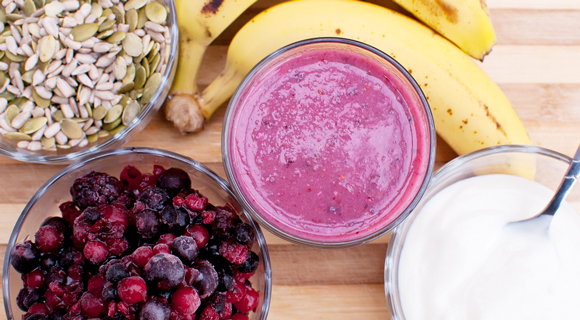
Eat smart for a healthy heart
Heart disease is the number one killer of both men and women in the United States, causing more than 600,000 deaths a year.1 If you’re worried about heart disease, one of the most effective ways to protect yourself is by eating a heart-healthy diet. Changing your daily food choices can help you prevent or even reverse heart disease.
Don’t worry, you’ll still enjoy tasty meals. And you don’t have to make these changes all at once. Start with small steps. Over time, the small changes can add up to a big difference in your heart health.
Here’s how to eat for heart health
- Eat fruits and vegetables. Eat a variety of fruit and vegetable servings every day. Dark green, deep orange, and yellow fruits and vegetables are especially nutritious. Examples include spinach, carrots, peaches, and berries.
- Eat a variety of grain products every day. Include whole-grain foods that provide lots of fiber and nutrients. Examples include oats, whole-wheat bread, and brown rice.
- Eat fish at least 2 times each week. Oily fish, which contain omega-3 fatty acids, are best for your heart. Options include salmon, mackerel, lake trout, herring, and sardines.
- Limit saturated fat and cholesterol. To limit saturated fat and cholesterol, try to choose the following foods:
- Lean meats and meat alternatives, like beans or tofu
- Fish, vegetables, beans, and nuts
- Nonfat and low-fat dairy products
- Polyunsaturated or monounsaturated fats, like canola and olive oils, to replace saturated fats such as butter
- Read food labels and limit the amount of trans fat you eat. Trans fat raises the levels of LDL (“bad”) cholesterol and also lowers high-density lipoprotein (HDL, or “good”) cholesterol in the blood. Trans fat is found in many processed foods made with shortening or with partially hydrogenated or hydrogenated vegetable oils, such as cookies, crackers, chips, and many snack foods.
- Choose healthy fats. Unsaturated fats, such as olive, canola, corn, and sunflower oils, are part of a healthy diet. But all fats are high in calories, so watch your serving sizes.
- Limit sodium. For good health, less is best. This is especially important for people who are at risk for or already have high blood pressure. If you’re African-American, have diabetes or chronic kidney disease, or are older than age 50, try to limit the amount of salt you eat to less than 1,500 milligrams a day. Others should try to limit sodium to 2,300 milligrams a day. Choose and prepare foods with little or no salt. Watch for hidden sodium in foods.
- Eat only as many calories as you need to stay at a healthy weight. Learn recommended serving sizes, and choose your portions accordingly. Limit drinks with added sugar. If you want to lose weight, increase your activity level to burn more calories than you eat.
- If you drink alcohol, drink in moderation. Limit alcohol intake to 2 drinks a day for men and 1 drink a day for women. You can see a picture of a standard drink here.
- Limit added sugar. Limit drinks and foods with added sugar.
- When you’re away from home, try to follow these heart-healthy eating habits.
Looking to get even more benefit from healthy eating? Try to get plenty of exercise and don’t smoke. Cigarette smoking greatly increases your risk of heart disease.
Start with small changes
When adjusting your eating habits, there’s no need to shift all of them at once. Help yourself have an easier transition by making 1 or 2 changes first. When those feel normal, add 1 or 2 more changes. Over time, these small changes can add up to help make a big difference in your health.
Try these tips to get started:
- Choose whole-grain bread instead of white bread.
- Snack on a piece of fruit instead of a candy bar.
- Add 1 or 2 servings of fruits and vegetables to your day. Slowly add more servings until you are eating at least 5 servings a day.
- Switch from 2% or whole milk to 1% or nonfat milk.
- Instead of red meat, make fish for dinner. Just brush it with olive oil, then broil or grill it.
- Switch from butter to a cholesterol-lowering soft spread. Use olive or canola oil for cooking.
- Add flavor to foods with herbs and spices, instead of salt.
- Modify your favorite recipes so they have less fat and fewer calories, but still taste good.
You might need a little time to get used to new tastes and habits. Don’t be discouraged! Keep in mind that you’re doing good things for your heart and your overall health.
1CDC.gov, accessed January 12, 2018.
TOPICSHeart HealthNutrition





